26 Types of Ducks in Wisconsin (With Pictures)
Last Updated on
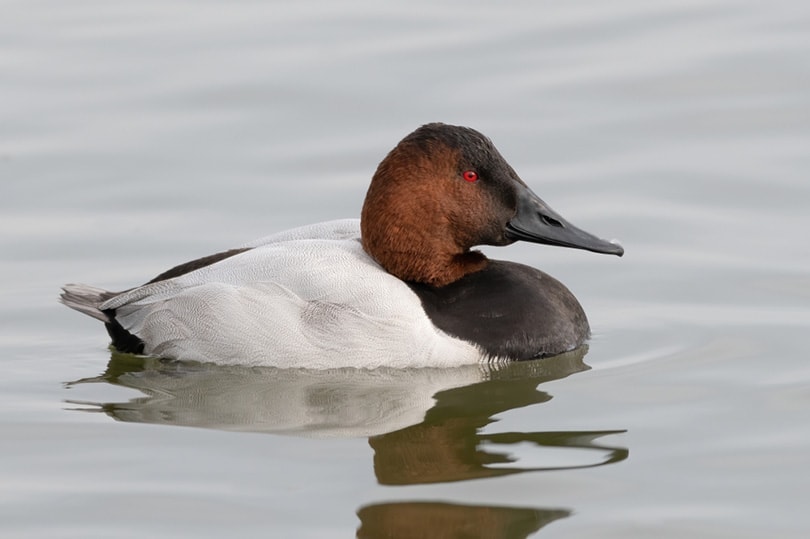
Wisconsin may be known for beer, cheese, and cold winters but the state is also home to a diverse array of wildlife, waterfowl, and farm animals. In Wisconsin, ducks are found from remote lakes and ponds to the backyards of urban homesteaders. If you’ve ever wanted to know more about the breeds of ducks found in the Badger State, you’ve come to the right place! Here are 26 breeds of wild and domestic ducks found in Wisconsin.

The 15 Wild Duck Types in Wisconsin:
Because ducks are migrating birds, you may not see all these species in Wisconsin year-round. But here are 15 wild ducks that spend at least part of their year in the state.
1. Mallard
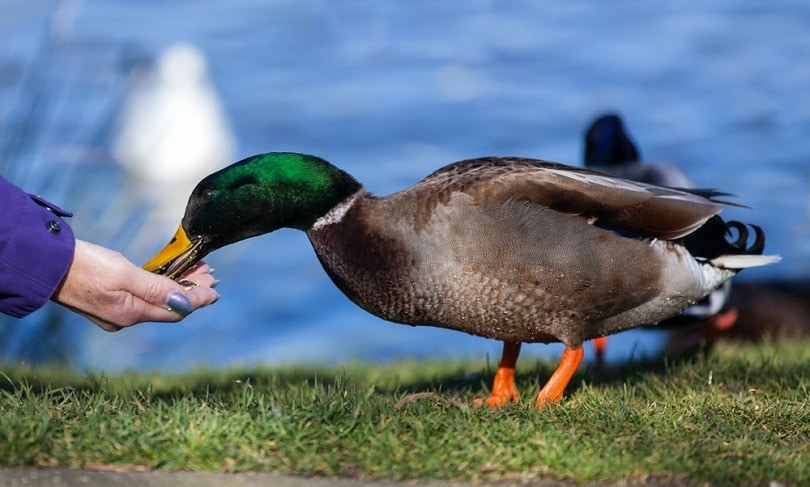
Mallards are probably the most recognizable of all wild ducks. Found in almost any type of water from remote lakes to ponds in city parks, mal
lards are large ducks who belong to the “dabbling duck” group, meaning they feed by tipping forward into the water to snag their meals.
Males are identified by their green heads, gray bodies, and curly black tails. Females sport a plain brown pattern common among nearly all female ducks. They are found year-round all over Wisconsin except for the northernmost regions, where they are found only during the breeding season.
2. Gadwall

Gadwall ducks are primarily migratory visitors to Wisconsin, with a few areas seeing breeding populations. Males are covered in a detailed pattern of gray, brown, and black feathers while females are only brown. They prefer water full of aquatic plants and though they are dabbling ducks by nature, they sometimes steal food from duck species who dive underwater for their food.
3. Blue-Winged Teal
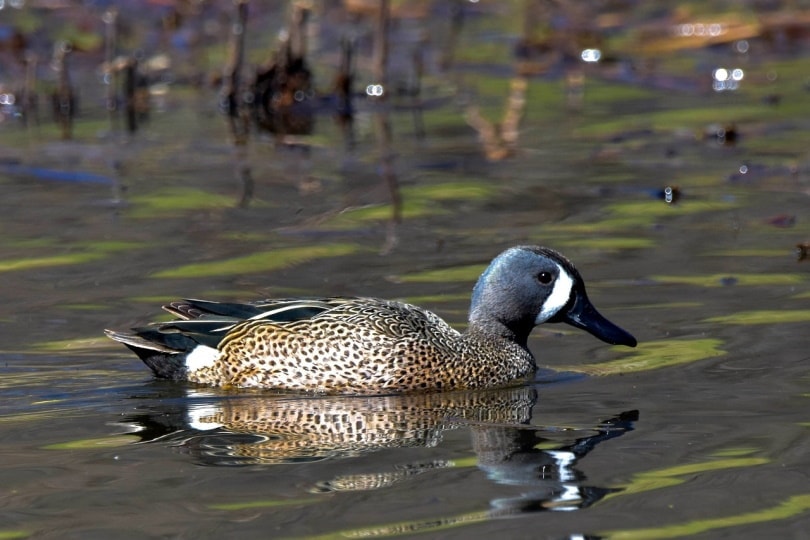
These small dabbling ducks spend the breeding season in Wisconsin before taking off on migratory journeys that may take them all the way to South America! They prefer to live in shallower water such as wetlands and marshes. Males are light buff with black spots and a blue-gray head with a white blaze just in front of the eye.
4. Wood Duck
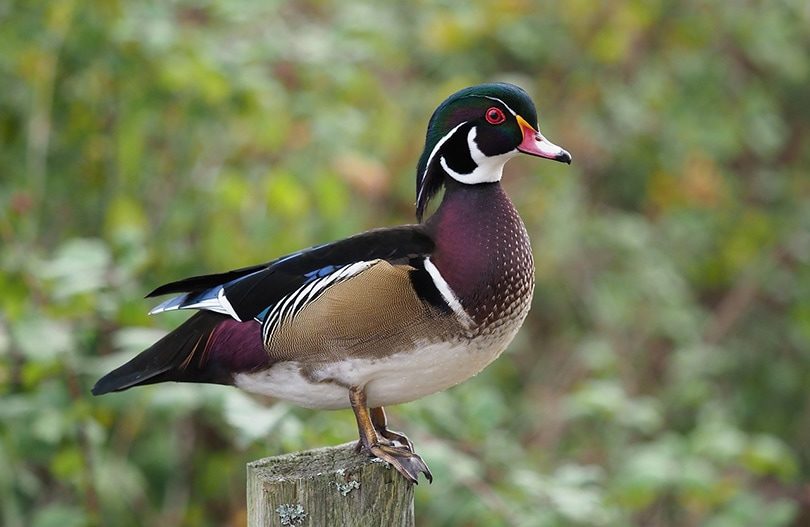
The gorgeous wood duck lives year-round in most of Wisconsin. They live in swampy forests and nest in trees rather than on the ground like most ducks. Wood ducks have clawed feet and can perch on branches, unusual among duck species.
Males have a beautiful, green crested head and boldly patterned chestnut, gray and black body. Female wood ducks also have more color than most, with a gray crest, white eye markings, and a blue patch on the wing.
5. American Widgeon
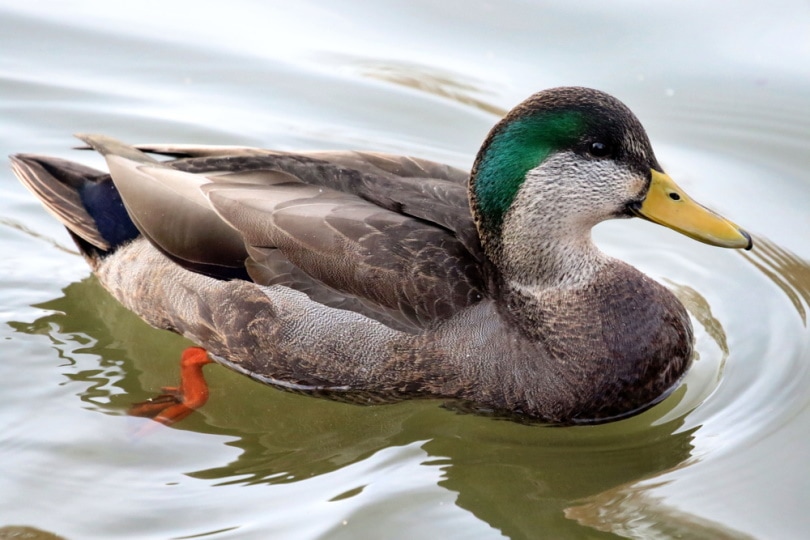
These noisy ducks are migratory visitors to Wisconsin, stopping to eat on their way south to winter in the Caribbean or Central and South America. American widgeons have short bills, and the males are brownish-gray with a green eye patch and white spot on top of their heads. Females are brownish-gray and both sexes can be identified by their white beaks with black tips.
6. Green-Winged Teal
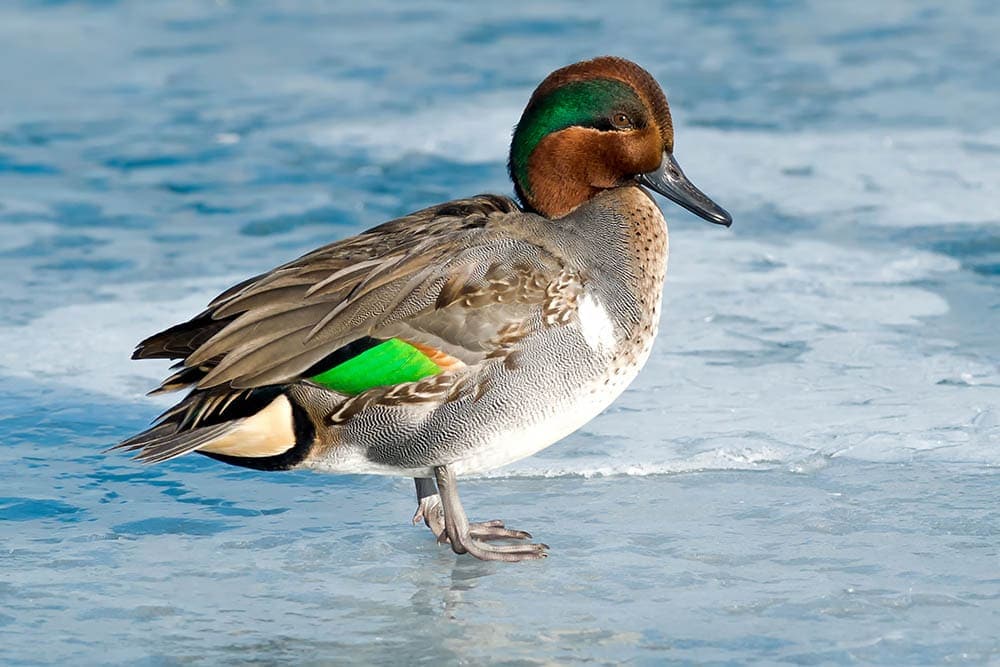
These ducks are the smallest dabbling duck found in Wisconsin, and North America for that matter. They breed in the northern part of the state before migrating south for the winter. Males have a reddish-brown head with a curving green eye patch. Females are brown with a white stripe on the rear. Both males and females have green patches on the underside of their wings, visible in flight.
7. Northern Pintail
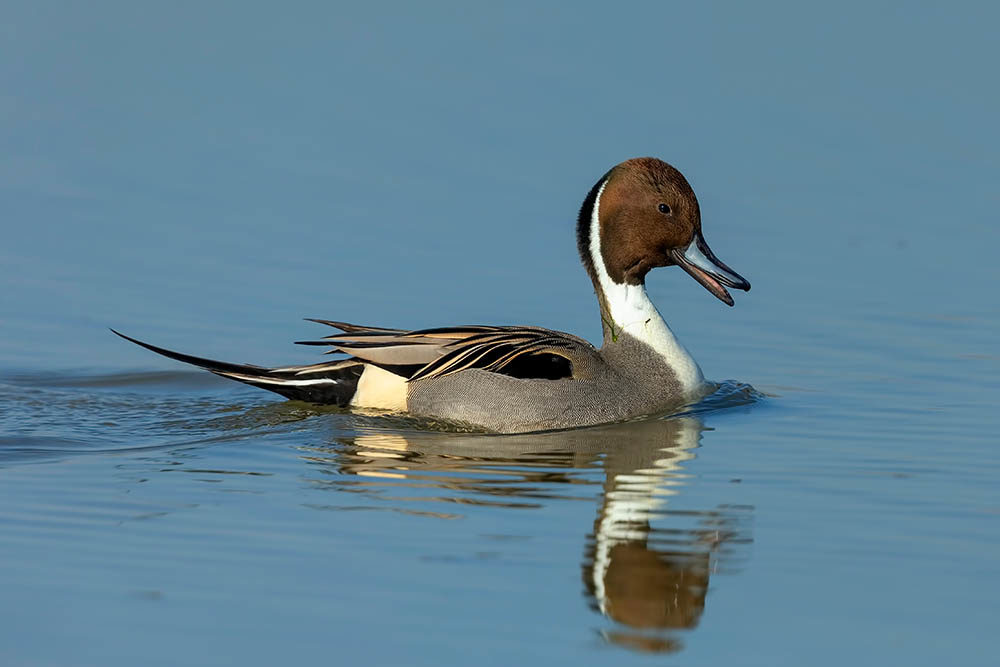
Northern pintails spend the breeding season along Wisconsin’s lakes and wetlands. These dabbling ducks have unusually long, thin tails, hence their name. They also have long necks for ducks, especially visible on the males because it’s mostly white, contrasting with their brown heads. Northern pintails prefer to do their migrating at night, flying nearly 50 miles per hour.
8. Northern Shoveler

These unusual ducks both breed and migrate through Wisconsin, offering plenty of chances to check out their unique bills. Both males and females sport a large, shovel-like bill, used to filter food out of the water as they forage. Males have green heads and brown and white blocks of color on their bodies. Females are the usual brown, but their beaks are bright orange. These ducks are monogamous and form long relationships.
9. Common Goldeneye

Common goldeneyes are winter visitors to Wisconsin, diving for food along lakes and rivers. They are distinctive in appearance, with both males and females showing the beautiful yellow eyes that their name implies. Males also have a green head and striking black and white body. Females show a brown head and gray body. Like wood ducks, common goldeneyes nest in tree cavities.
10. Bufflehead
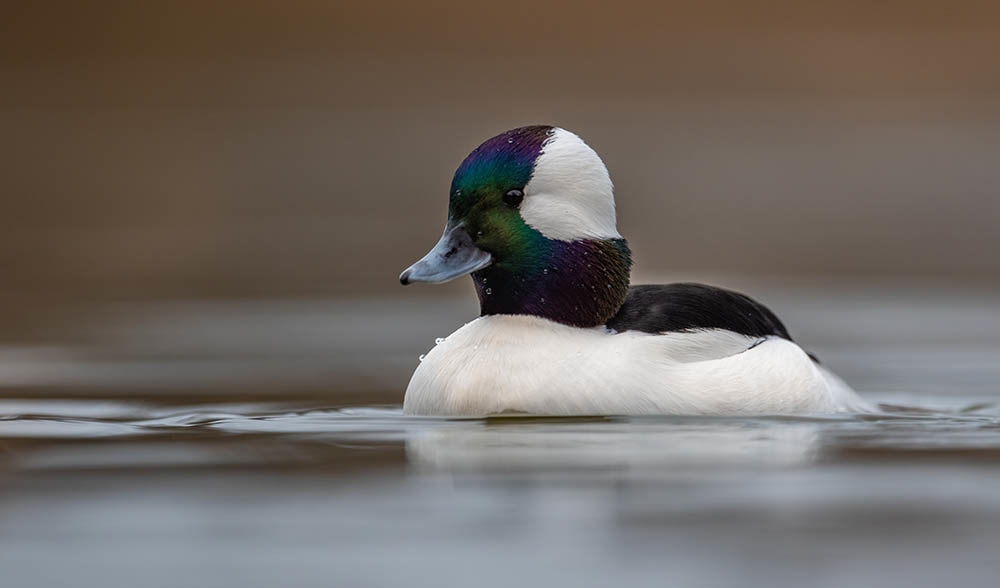
Tiny ducks with large heads, buffleheads primarily migrate through Wisconsin, sometimes stopping to winter in the southeast corner of the state. These diving ducks nest in trees, taking over old woodpecker holes. The males have black and white bodies, while their heads are greenish-purple with a large white mark on the back. Females are brown with a white patch on their cheeks.
11. Ring-Necked Duck

These diving ducks breed in northern Wisconsin and migrate south through the rest of the state in fall and winter. They are found in shallow ponds and wetlands. Males are black, gray, and white with a distinct peak at the top of their heads. Females also have a peaked head with a gray face and brown body. They do have a ring around their neck, as the name implies, but its brown color blends in too well to be easily seen.
12. Hooded Merganser
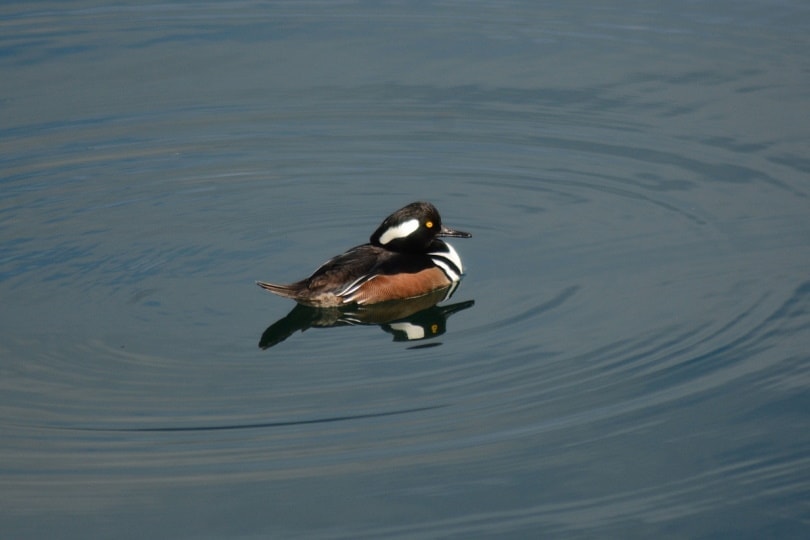
Hooded mergansers are found year-round in the southern half of Wisconsin and the northern half during the breeding season. They inhabit ponds and rivers and nest in trees. The ducklings leave the nest at only one day old, jumping from tree to ground without missing a beat.
These ducks have thin beaks and huge heads, covered in an extravagant crest which can be raised and lowered. Females have a light brown crest, while males show off a bold black and white version. These ducks are hard to miss!
13. Redhead
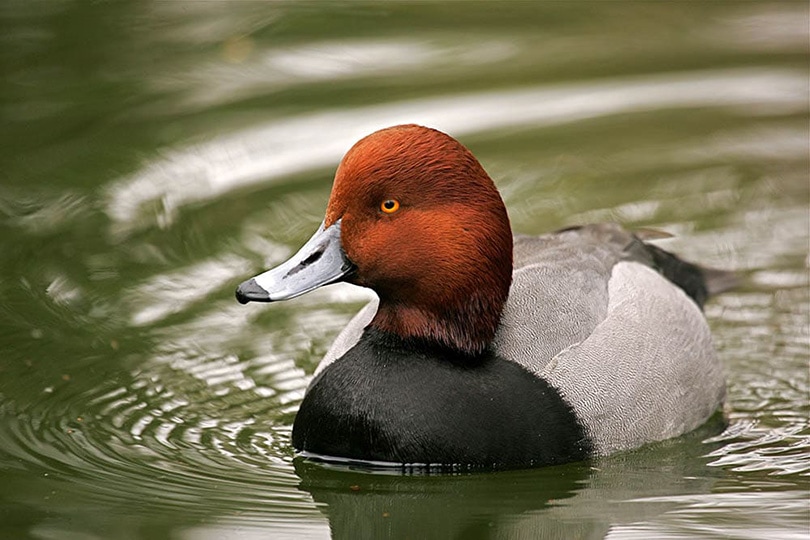
These ducks are migratory inhabitants of Wisconsin, stopping by for a meal and a rest on their way to winter in the southern U.S. and Mexico. Redheads are known for being extremely social, forming flocks of thousands during migration. Males have a cinnamon-colored head atop a gray and black body. Females are brown and both have gray bills with white tips.
14. Canvasback

The canvasback’s winter range reaches just up into southern Wisconsin, where they are found in lakes. They dive down to eat underwater plants and have sharply sloped heads. The males’ heads are brown and they have white bodies bookended by black chests and tails. Females are pale with darker chests and rears.
15. Lesser Scaup

Lesser scaups are migratory visitors to Wisconsin, descending to large lakes in huge flocks. These diving ducks eat aquatic plants and invertebrates. Both males and females have unusual peaked heads. The males’ heads are black with gray and white bodies. Females are chocolate brown with a white patch near their beaks.

The 11 Domestic Duck Types in Wisconsin:
Wisconsin winters can be harsh and although ducks usually tolerate winter weather well, these 11 domestic duck breeds are specially adapted to handle them.
16. Khaki Campbell

These adaptable ducks thrive in both cold and hot climates. They are one of the most popular domestic ducks because they can be raised for both meat and eggs and are particularly productive egg layers. Khaki Campbell ducks are brown with olive heads.
17. Pekins

Pekins are probably the most familiar domestic duck breed. White with yellow beaks and feet, these affable ducks are raised for both meat and eggs but also make lovely pets. They may lay as many as 200 eggs in a year.
18. Muscovy

Impossible to miss with their strange, bumpy red faces, Muscovy ducks are one of the oldest domesticated breeds. They are calm, quiet ducks raised for meat and eggs but also kept as pets. They are not quite as cold tolerant as the other breeds on the list and must have adequate shelter in the winter months.
19. Appleyard

Appleyard ducks were developed in England for both meat and egg production. They are friendly ducks who grow quickly and lay as many as 270 eggs in a year. They look similar to Mallard ducks but with a lighter silver coloring.
20. Cayuga
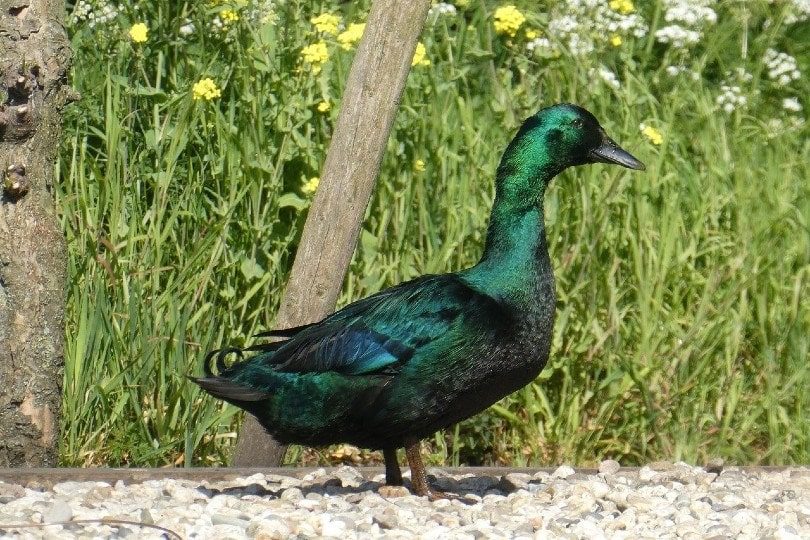
Cayugas are smaller ducks but are one of the toughest when it comes to living through cold winters. Raised for meat and eggs, they are also among the most popular pet duck breeds. They usually lay 100-150 eggs per year.
21. Rouen
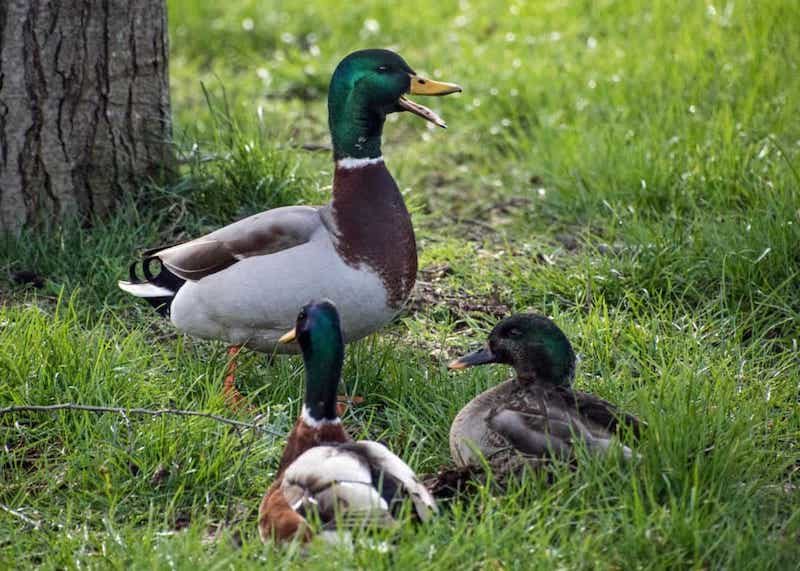
Rouens look like larger, heavier, mallard ducks that are more reluctant to fly. They are used for both egg and meat production. These ducks are also popular as pets and show ducks thanks to their easy-going personalities.
22. Welsh Harlequin

This breed developed from a color mutation first observed in a flock of Khaki Campbell ducks. They are a newer breed, standardized in the mid-20th century. These ducks are raised for both meat and eggs and are excellent layers. They are also friendly, curious ducks who enjoy human interaction, making them popular pets.
23. Indian Runner

Indian runner ducks were once known as “penguin ducks” because they hold themselves upright like penguins and run rather than waddle. This breed is primarily used for egg production because their lean body types don’t produce much meat.
24. Call

These tiny ducks descend from mallards originally but are much smaller with shorter bills than their wild ancestors. They are primarily kept as pets or show ducks because of their size and lively personalities. They are noisy little birds, something to keep in mind if you’re looking for backyard ducks.
25. Saxony
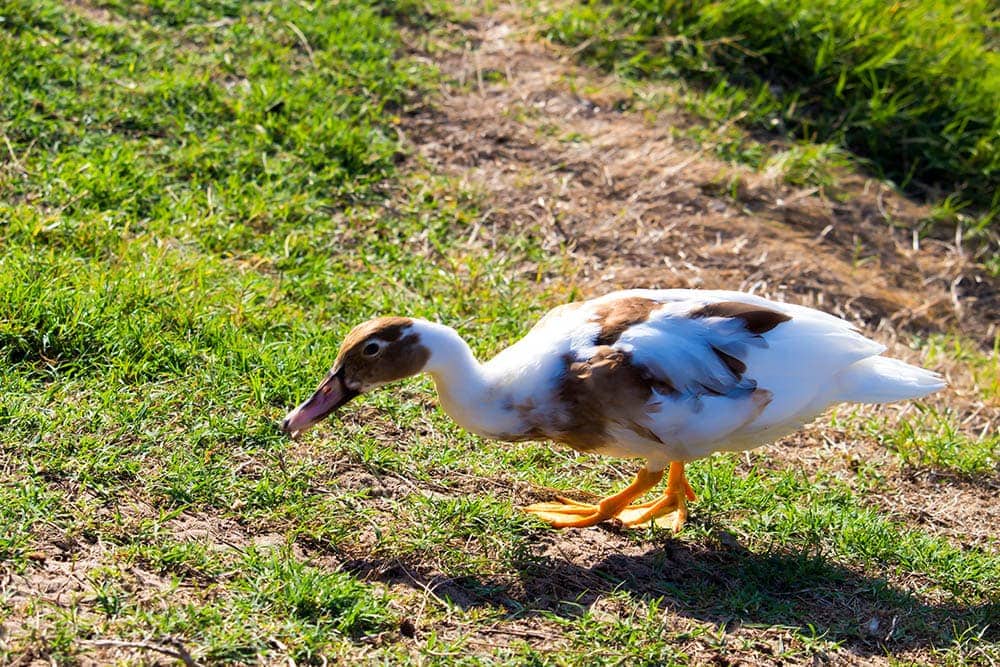
Developed in Germany, Saxony ducks are highly adaptable and tolerate cold weather well. They are fantastic egg producers, laying as many as 240 in a year. They are also raised for meat, although they don’t grow as fast as other breeds.
26. Buff Orpington

These beautiful, friendly ducks are one of the best meat breeds you can raise but are just as likely to be found playing the role of a pet. Developed in England, this is a hardy duck with gorgeous buff coloring and yellow beaks and feet. They pack on weight quickly, ideal for a meat duck.

In Conclusion
The ducks of Wisconsin are large and small, colorful and dull, wild and domesticated. They may keep permanent addresses in the state or find themselves just passing through. Whatever your purpose in learning about the waterfowl of Wisconsin, we hope you enjoyed reading about these 26 ducks found in the state.
Featured Image Credit: Jim Beers, Shutterstock
About the Author Elizabeth Gray
Elizabeth Gray spent more than 20 years working as a veterinary nurse before stepping away to become a stay-at-home parent to her daughter. Now, she is excited to share her hard-earned knowledge (literally--she has scars) with our readers. Elizabeth lives in Iowa with her family, pet Husky and the worldʻs most patient cat. When not writing, she enjoys watching all sports but especially soccer, reading, and spending time outdoors with her family.
Related Articles:
Monocular vs Telescope: Differences Explained (With Pictures)
How to Clean a Refractor Telescope: Step-by-Step Guide
How to Clean a Telescope Eyepiece: Step-by-Step Guide
How to Clean a Rifle Scope: 8 Expert Tips
What Is a Monocular Used For? 8 Common Functions
How to Clean a Telescope Mirror: 8 Expert Tips
Brightfield vs Phase Contrast Microscopy: The Differences Explained
SkyCamHD Drone Review: Pros, Cons, FAQ, & Verdict
